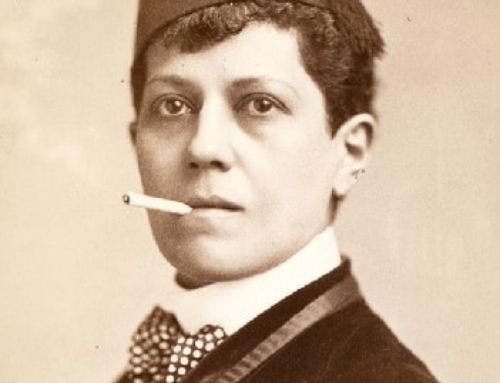
Years active
1890 – 1906
Stage Name(s)
Florence Hines
Category
Male Impersonator
Country of Origin
USA
Birth – Death
unknown – 1924
Bio
Despite the dearth of personal biographical details, there is enough ample evidence to show that African American Florence Hines had a flourishing career as a male impersonator on the vaudeville stage beginning circa 1890 with Sam T. Jack’s production, The Creole Show.
Little is known of Hines’ personal life though we do have records of her public life by way of newspaper notices and reviews which regale her outstanding performances. Despite not having biographical evidence, specifically her date of birth, it is likely to presume that she was born on the heels of the abolitionist movement if she started performing circa 1890. Considering this, her career achievements are incredibly remarkable for an African American, female, gender-bending entertainer.
Hailed as the Vesta Tilley of black male impersonators, Florence Hines was a prominent figure in black theatre. Through her performance as a male impersonator, Hines simultaneously crossed racial, social and gender barriers. She played a dandy which was the depiction of a well-groomed, well-dressed, yet self-absorbed man. The songs she sang emphasized the dandy’s obsession with material things in “For I’m the Lad That’s Made of Money”, “I Can’t See My Money Go That Way” and “A Millionaire’s Only Son”.(1) This was a departure from the derogatory portrayal of black men in minstrelsy as illiterate, grotesque plantation workers. Thus, Hines transcended these stereotypes by wearing a tuxedo with tails, cane, cape and a top hat rather than appearing ragged, shoeless and in blackface. She was plausibly the first black male impersonator to present the black man as a modern cosmopolitan. (2)
As stated, Florence began her career circa 1890 with Sam T. Jack’s The Creole Show and performed with this show until 1897 for seven seasons. In its creation and execution, The Creole Show changed the trajectory of black entertainment bringing empowerment through strong, positive imagery. This show was the first all-black theatrical production to not portray African Americans in a derogatory manner serving as a break from minstrelsy. It was a variety company which was comprised of serio comic singers, punsters, fun makers, dancers, musicians, and a flock of chorus gals.
Florence Hines passed away in San Jose, California on March 7, 1924. (3)
(Submitted by: Mo B. Dick, Los Angeles, CA)







